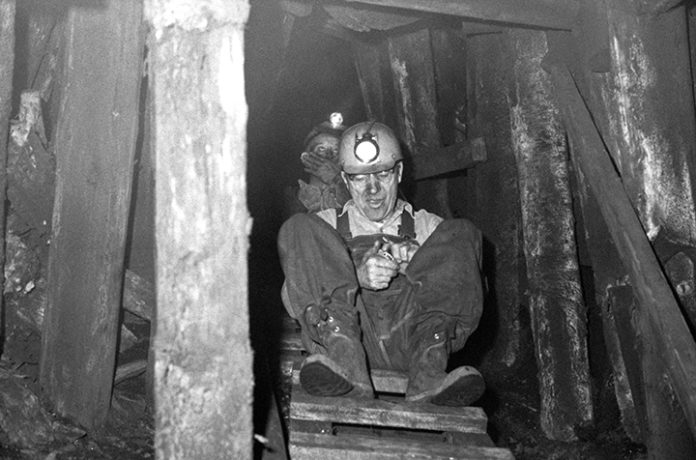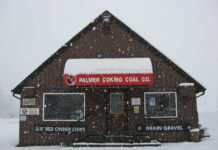This unique photo shows Bill McLoughry and John Streepy (above) seated on a steep ladder in a passageway of the Rogers No. 3 mine. McLoughry can be seen grabbing a pinch of Copenhagen, often called snus and pronounced ‘snoose’ by miners. Because cigarettes were banned in coal mines, chewing tobacco, particularly Copenhagen was the preferred source of nicotine for miners when working underground. Both McLoughry and Streepy were World War II veterans who spent most of their working career at Palmer Coking Coal Co.
The narrow passageway where Bill and John waited connected two mining levels. Here miners sought temporary refuge after blasting coal with dynamite. Following the blast, clouds of white smoke and the smell of explosives filled the gangway or counter-level. The laddered area provided fresh air as miners stood by for the smoke and smell to clear. In most underground mines, nitroglycerin-based dynamite sticks were the preferred means for dislodging intact coal. However, dynamite had to be handled with gloves as touching it with bare hands produced a nitroglycerin headache. In the very early days of mining, open fuse black powder was often used but eventually banned for triggering catastrophic mine explosions. Permissible explosives were compromised of safer types of dynamite ignited by electric caps of different delays to produce desired blasting patterns. This April 1974 photo by Barry Kombol, a Black Diamond attorney, occurred during a series of nights when Kombol stayed a second shift snapping photos of his fellow coal miners undertaking their various mining jobs.







